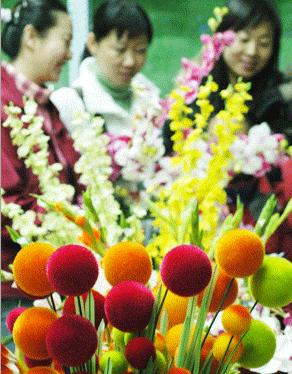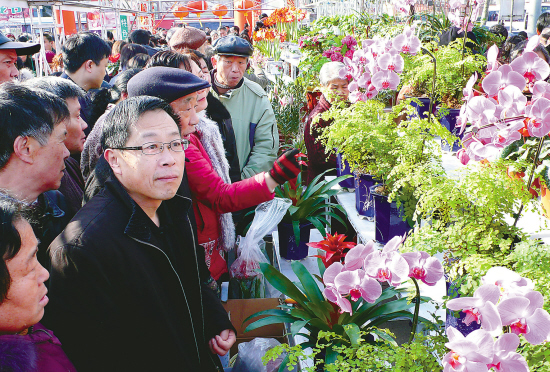
Flowers hold a special significance at Chinese New Year, and the Chinese language's endless opportunities for puns and play on words are demonstrated in the flowers which are used. As with almost all activities at Chinese New Year, there is enormous symbolism in the use of flowers.
In Chinese cities around the world, flower fairs appear on the 26th day of the last moon, and run each evening until New Year��s Eve. A stroll through the flower fair is a New Year ritual many Chinese enjoy, even after they��ve got all their flowers; indeed, it��s a popular way of spending New Year��s Eve while waiting to see in the New Year.
Three of the most significant flowers are described below.
Peach Blossoms
Blossoms are particularly auspicious flowers. Coming as they do in spring they symbolize life, growth and prosperity. The peach blossom is the most auspicious of all plants, its significance lying in the symbolic importance of the peach. The peach, in Chinese culture, is a symbol of long life, and is regarded as the strongest defence against evil. Should your peach blossom bloom during the New Year celebrations it is sure sign that the year ahead will be one of good fortune. Sprays of peach blossom at one time they were placed above front doors to prevent even the strongest evil spirit from getting into the house. The custom today is to use them as decorations within the house.
Kumquat Tree
This is a play on words. In Chinese the kumquat is called Gam Gat Sue. The word Gam rhymes with the Chinese word for gold, and the word Gat rhymes with the Chinese word for luck. The tiny green leaves of this plant symbolize wealth as the word Lu (green) rhymes with the Chinese word for wealth. Finally the shape of the small oranges are a symbol of unity and perfection.
Peony
The peony is called the ��Flower of Riches and Honour�� in Chinese, and is the emblem of love and affection, as well as being a symbol for feminine beauty. The bright red peony is particularly auspicious, bringing with it luck and good fortune.

|

